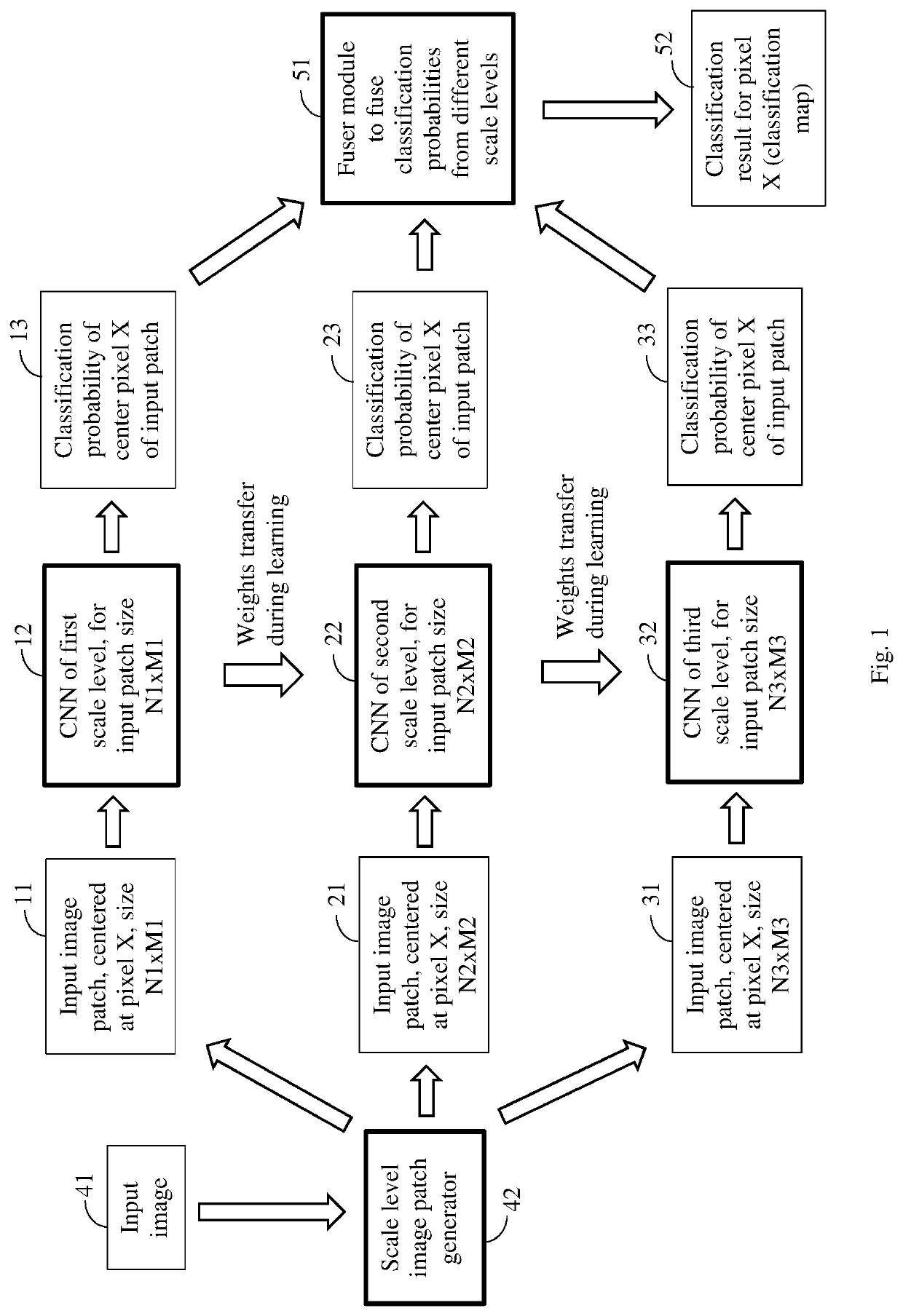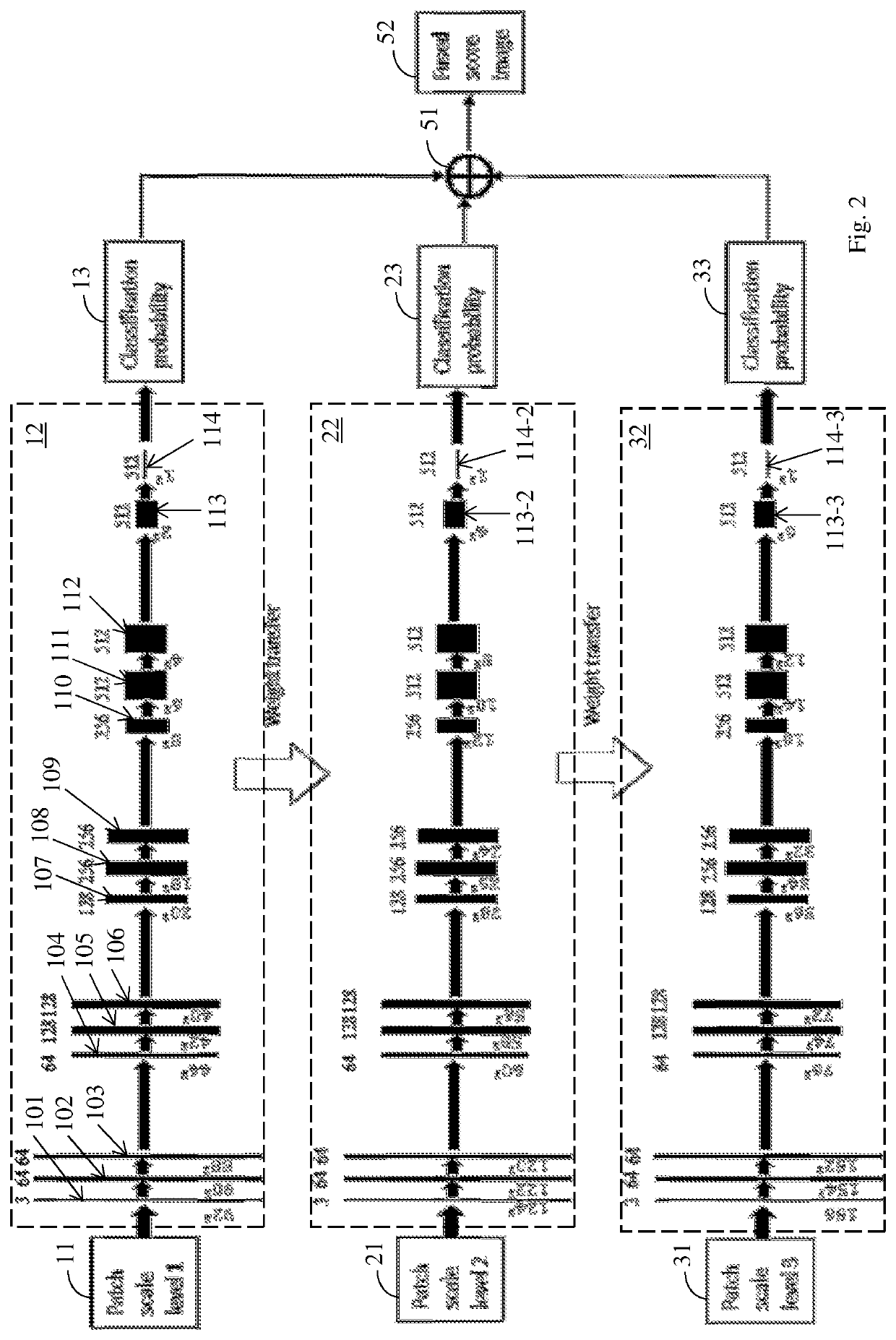Method and system for multi-scale cell image segmentation using multiple parallel convolutional neural networks
a convolutional neural network and cell image technology, applied in the field of artificial neural network technology, can solve the problems of low performance, low performance, and traditional machine learning methods that cannot achieve good cell image segmentation results,
- Summary
- Abstract
- Description
- Claims
- Application Information
AI Technical Summary
Benefits of technology
Problems solved by technology
Method used
Image
Examples
Embodiment Construction
[0020]Embodiments of the present invention provide an improved convolutional neural network (CNN) system, referred to as a multi-scale CNN, which is effective for cell recognition in cell images captured by a microscope. The technology may be used to perform quantitative analysis of the images.
[0021]Generally speaking, the task of cell recognition (also referred to as cell segmentation) is to classify parts of the input image as cell or background. In embodiments of the present invention, each pixel of the input cell image is classified into one of three classes: background, cell, and edge.
[0022]The cells in a call image vary in size, shape, and potentially overlap each other. Commonly used approaches like patch-by-patch scanning method or up-sampling method do not achieve satisfactory result in cell images due to the following three factors: First, cell segmentation requires very accurate boundary shape which is hard to achieve using the up-sampling method. Second, cell images typi...
PUM
 Login to View More
Login to View More Abstract
Description
Claims
Application Information
 Login to View More
Login to View More - R&D
- Intellectual Property
- Life Sciences
- Materials
- Tech Scout
- Unparalleled Data Quality
- Higher Quality Content
- 60% Fewer Hallucinations
Browse by: Latest US Patents, China's latest patents, Technical Efficacy Thesaurus, Application Domain, Technology Topic, Popular Technical Reports.
© 2025 PatSnap. All rights reserved.Legal|Privacy policy|Modern Slavery Act Transparency Statement|Sitemap|About US| Contact US: help@patsnap.com



